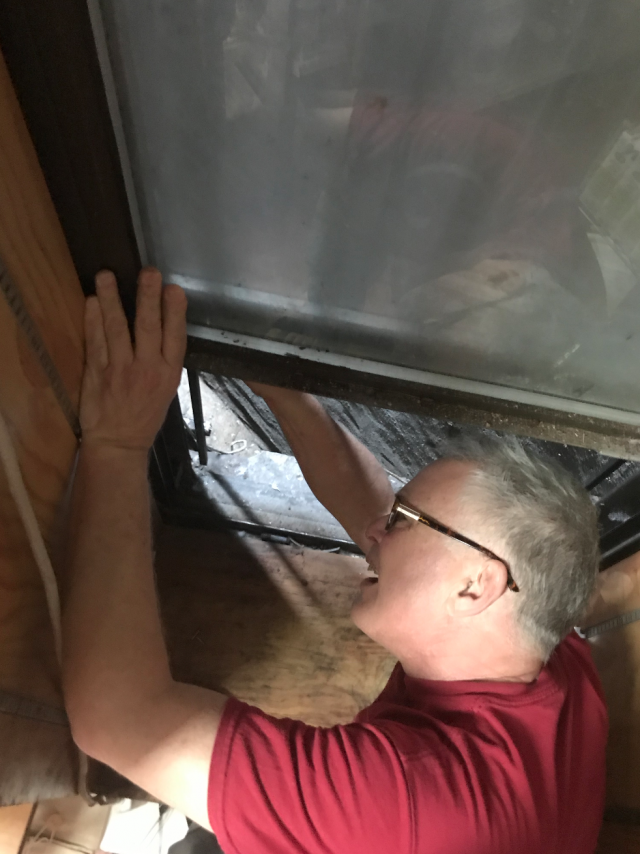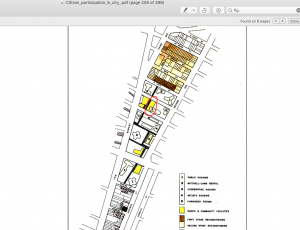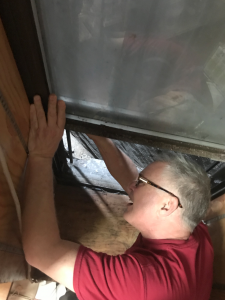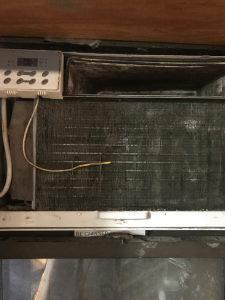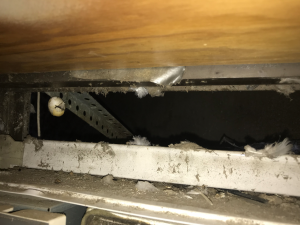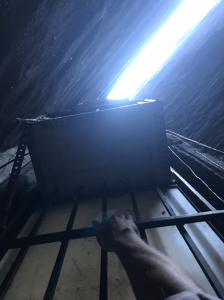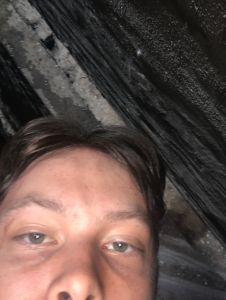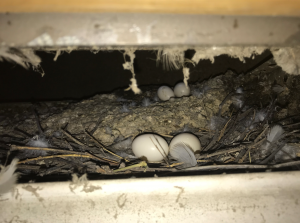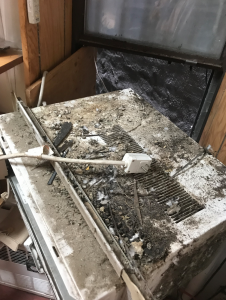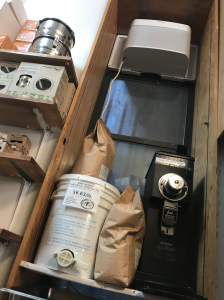Learned that the co-op has its genesis in the Cooper Square Committee’s (CSC) “Alternate Plan,” a critical reformulation of a proposed Robert Moses urban renewal project, generated by those who would have been effected. (Not totally lateral or radical; there was still a head planner and the dissertation I’m reading this out of is focused on ‘citizen participation’—the way such a form gets defined when city officials write community board input into land planning law and practice—never even batting an eye at the undocumented.) The CSC is an experimental organization and the 4th st food co-op is part of, at least genealogically, an experiment.
Our relationship to this experiment now is somewhat looser. Two links come to mind in light of the frame that the “Alternate Plan” constructs. 1) Our rent is set incredibly low thanks to CSC’s Mutual Housing Association and continued anti-gentrification work—so our existence is still thanks to and sustained by that network. 2) 4th street between bowery and second ave was positioned in the early 2000s as a vision of what the city could look like with local control of rent (when it’s buildings were sold for a ceremonial dollar, from the city to CSC, then from CSC to arts organizations, etc).
How might the co-op articulate itself as an experiment, and not a part?
One approach: How can we refine the ‘stance’ of the co-op as anti-capitalist and refine what commercial is actually meant to mean. Even against the grain of having a ‘function’—the co-op acts more as an infrastructure without set audience or even an easily definable set of inputs: everything mediated by the crystalline experience of horizontal, non-normative organizations: love, notes, stories, friendships made, etc—it is still hard to characterize the unique position of the co-op without using the word ‘commercial’? Cause we sell shit.
“I was going to say that, at the end of the day, the co-op is a commercial venture. But it is precisely insofar as the co-op has an ‘end of the day’ that it becomes a commercial venture. On one hand I’m talking about closing time, a serial ending, and the difficulty I’ve had in finding a much more robust way to engage the friendships built at the co-op outside of it, or outside its structuring of my time, my week; and on the other hand, I’m talking about the lack of internal channels for theoretical ferment that might generate a horizon beyond that given (as ‘food for people, not for profit’) in our very scanty official discourse.”
This would seem to define commercial as the temporal (closing time), spatial (after work you go home), and theoretical (theorizing about what you are engaged in is discouraged) organizational cliches of capitalism.
But just like how those organizations of time, love, and vision by capitalist forms of work could never even begin to be total and determinate, so too is the co-ops organization riddled through with strangeness, complicated intimacy, anarchic division of space, which is what keeps me there, if that is even the right way to say it… moving in that medium…
“Correspondence was an experiment in social organization. While the group established a provisional, literary form for its organ, which it struggled to maintain despite the reductions in the frequency of its publication and the breadth of its distribution, it was unable to find a satisfactory form for the organization itself. What would an organization that rearranged, even erased the divisions between the first, second, and third layers of society look like when it was dedicated to acknowledging the priority and supporting the efforts of the “third layer”—not imposing organizational principles determined by the first layer on that third layer but allowing it to find and disseminate its own method of organization? How could the intramural contact of workers be maintained and fostered in its autonomy, and how would extramural contact between the different layers of this movement operate? What would be the role of James, an intellectual and an old Bolshevik, whose distance from these forces was redoubled not only by his detachment from the labor process that had initially brought many members of the organization together but also by his forced departure from the United States just as the organ began to be published as a newspaper?
[Keeping Correspondence’s questions in the form of questions—and playing with the impression that they mark its failure—is actually a foreshadowing of the internal practice Laura goes on to foreground. So no, Laura does not ‘answer’ them, but looks to how Correspondence develops this form of questioning within itself. Are these still questions of possibility? How is possibility working in Laura’s special way of analyzing latent aesthetics? She does not ‘answer’ possibility by dreaming up what the finished product would look like, but goes to how the possibility was formed as a reality, a series of internal questions: asking how those worked, what they could do…]
The group’s agonizing attempts to create a new social form took shape across a plethora of internal documents: the meeting minutes, memoranda, letters both open and secret, within and from the New York, Los Angeles, Detroit and other offices in London, where James had moved. Rather than in its official organ or in its sanctioned political activities, it is in and through these unofficial documents, which address the constraints and contradictions that keep the organization from ever coming into its own, that the organization most fully came to life.”
How can we think the distinction between coming into one’s own and coming to life? Growing up and blossoming wouldn’t be about achieving the pre-planned form, possibility’s end, but getting opened out to life—generating an improvisational form like that Correspondence was so damn committed to in terms of contact and mutual incorporation. It’s a reformulation of work and the worker as a critique of the exceptional definition cut out in this Marx quote: “A spider conducts operations that resemble those of a weaver, and a bee puts to shame many an architect in the construction of her cells. But what distinguishes the worst architect from the best of bees is this, that the architect raises his structure in imagination before he erects it in reality.”
And how can we investigate the subtle distinction that professor Harris is making and then undoing between text and social organization—between the “provisional, literary form [of] its organ,” Correspondence, and the social organization of Correspondence, which by the end we access through documents?
So what is my research question, given all this?
The urgency is the system of production and distribution we have (for food, but perhaps more pressingly for buildings and cities) which continually forecloses participation beyond the political in deforming life. “I am altering the existing units of perception usually employed to discern the wholeness of a thing.” We are bound (to this ‘thing’ which is both more and less than the stability of the co-op as empirical object on 4th street) by a mixing that fucks up ethics on an infrastructural level.
It is important to focus on what goes on inside the co-op because it is a place to meet people; its power is not, like the community boards, so ‘outwardly’ channeled in the official means of government. So let’s focus on what goes on inside of it—in particular the inclusiveness, which generates the co-op not as an ‘alternative political community’ but as a sort of social lab over and in the means of distribution.
So far these pictures are my best response, and the lunch I had just now with Russ.
My next step is marking out the limits of what I’m doing—conceptually, yes, as a way of thinking half of the formulation of possibility within the co-op. But also ‘practically’: what do I know I won’t get to? What does this project adumbrate? Again, how will this effect what research means, when it is not subordinated to the assignment form?
